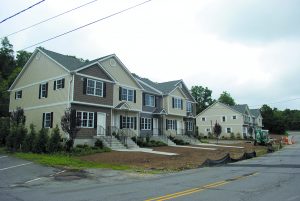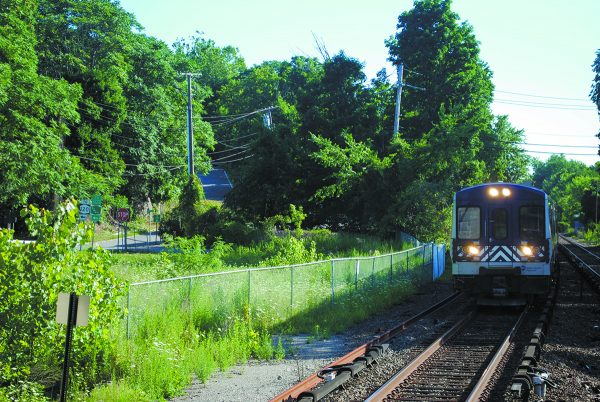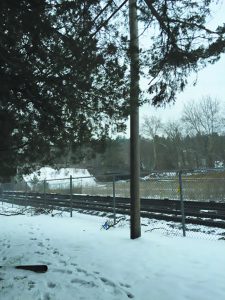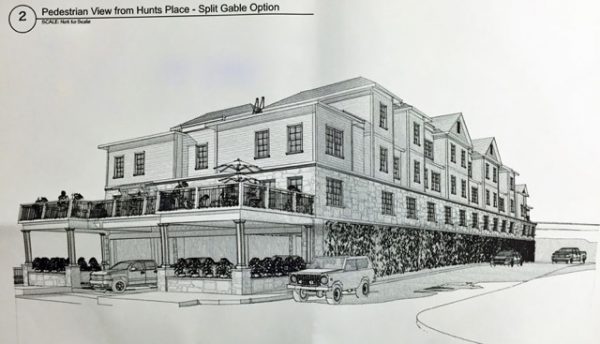
We all know Habitat for Humanity for the wonderful things they do around the globe to provide housing for those in need, but Habitat for Humanity of Westchester (HHW) has also been busy working closer to home–at 300 King Street in Chappaqua to be exact. The structure was originally the Orthodox (Quaker) Friends’ Meeting House built in 1885.
I visited the site and was received with a warm, enthusiastic welcome from HHW CEO Jim Killoran. His fervor and passion for what he does is infectious. “New York is the most exited state in the country,” says Killoran, a longtime New Rochelle resident. “We want to create ownership….In-town, affordable homeownership is a vital component in keeping our communities thriving,” he notes.
Killoran has been working with HHW for 30 years in various capacities. He’s a specialist in disaster relief and was involved in mobilizing approximately 9,000 volunteers to help with the vast cleanup after Hurricane Sandy, particularly in the Rockaways and Breezy Point where entire communities were basically submerged. He is also involved in projects providing housing for veterans.
“My assistant is a wounded warrior, my uncles were all in WWII…and my cousin was killed in Vietnam. So, it’s a cause very near and dear to my heart,” says Killoran.
In scale, 300 King Street is a small project.Upon completion, it will be a two-unit condominium, each approximately 1,800 square feet with three bedrooms and two baths. Westchester County purchased 300 King Street via HUD from the Evangelical Lutheran Church of Our Redeemer for approximately $300,000, and each unit will sell around $250,000 to $280,000.
Applications are submitted to the Housing Action Council. Applicants must qualify “with incomes at or below 80 percent of the Westchester County’s Area Median Income….” The qualified applicants are then put into a lottery.
Architect Bill Spade of Sasaki + Spade, who has donated his time and talent, notes that 300 King Street will be HHW’s most energy–efficient structure built to date.
Like most construction projects, 300 King Street has not been met without its challenges. They discovered the foundation was unstable and needed to be shored up.
In terms of the design, “Habitat’s acceptance of the Town Historic Designation committed to restore the exterior to its original appearance,” says Spade. “The style, Stick Victorian, is to match the original structure when it was reconstructed on this site in 1885,” he adds. The exterior design will match the original building, and the front porch will remain with all of the original materials. The exterior siding and trim around the remainder of the building will be new but will replicate the original look. The interior will be all new. There will also be green space created in the front of the building for a garden.
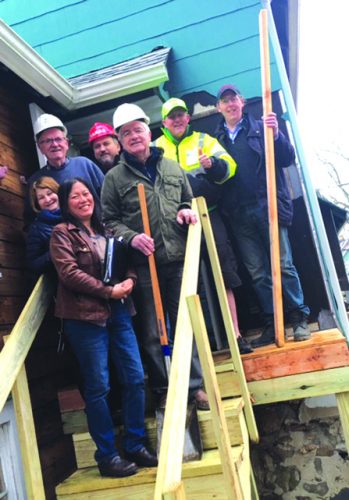
The target date of completion is September 2017, but a lot depends on fundraising and volunteerism. HHW is kicking off a Buy-a-Brick campaign where donors’ names will be engraved in a brick and incorporated in the structure as well as walkways. Donors can also purchase energy-efficient windows with their names etched in the glass.
Although Westchester County purchased the building for $300,000, it’s HHW’s responsibility, as developer, to raise additional funds for supplies, materials, and volunteer staff to donate their time and professional skills for painting, landscaping, etc. “We ultimately would like to raise an additional $300,000 for the completion,” says Killoran.
Aside from monetary donations, fundraising can also come in the form of companies donating materials. “Franzoso Contracting has donated all the roofing materials, Silverstein Properties donated lumber, and Dow donated insulation,” Killoran notes.
Volunteerism is Habitat’s signature. “We are committed to every youth, from GED to PhD, we teach them to build, to make things, to use their hands….Horace Greeley kids volunteer through the Habitat Club,” says Killoran. “Also, football teams, 50 high schools, 14,000 college students…when kids volunteer, they realize they’ve changed the trajectory of families’ lives by getting involved. It’s an amazing thing!”
The project is not just for the young.
People of all ages offer their time and expertise, like longtime Chappaqua resident David Kellogg. “I kept driving by the site, and the sign would always catch my eye.
I had to check it out,” says Kellogg.
Now retired, Kellogg was the publisher for Foreign Affairs Magazine and an adjunct professor for the Columbia School of Journalism. However, woodworking happens to be his hobby. He now donates his time and woodworking skills, helping with gutting, framing, and, eventually, interior trim work. “I’ve met some incredible people volunteering on this project,” says Kellogg. “Retirees are our heart. They now volunteer on Tuesdays and Thursdays. From 8 to 84 and more, everyone is a youth with Habitat….Habititis is spreading!” says Killoran.
Chappaqua/Pleasantville resident and volunteer Sue Halper commented on how much she has learned about energy efficiency and has implemented many of the energy-saving techniques in her own home. “We’ve reduced our energy consumption by 20 percent,” says Halper.
HHW is also busy building another two-unit home at 437 Saw Mill River Road in Millwood. “We’ve had wonderful support from the surrounding communities….After all, homeownership really is the American Dream,” says Killoran.
To learn more, donate or volunteer, please visit www.habitatwc.org.
Janine Crowley Haynes is a Chappaqua resident and author of My Kind of Crazy: Living in a Bipolar World.
